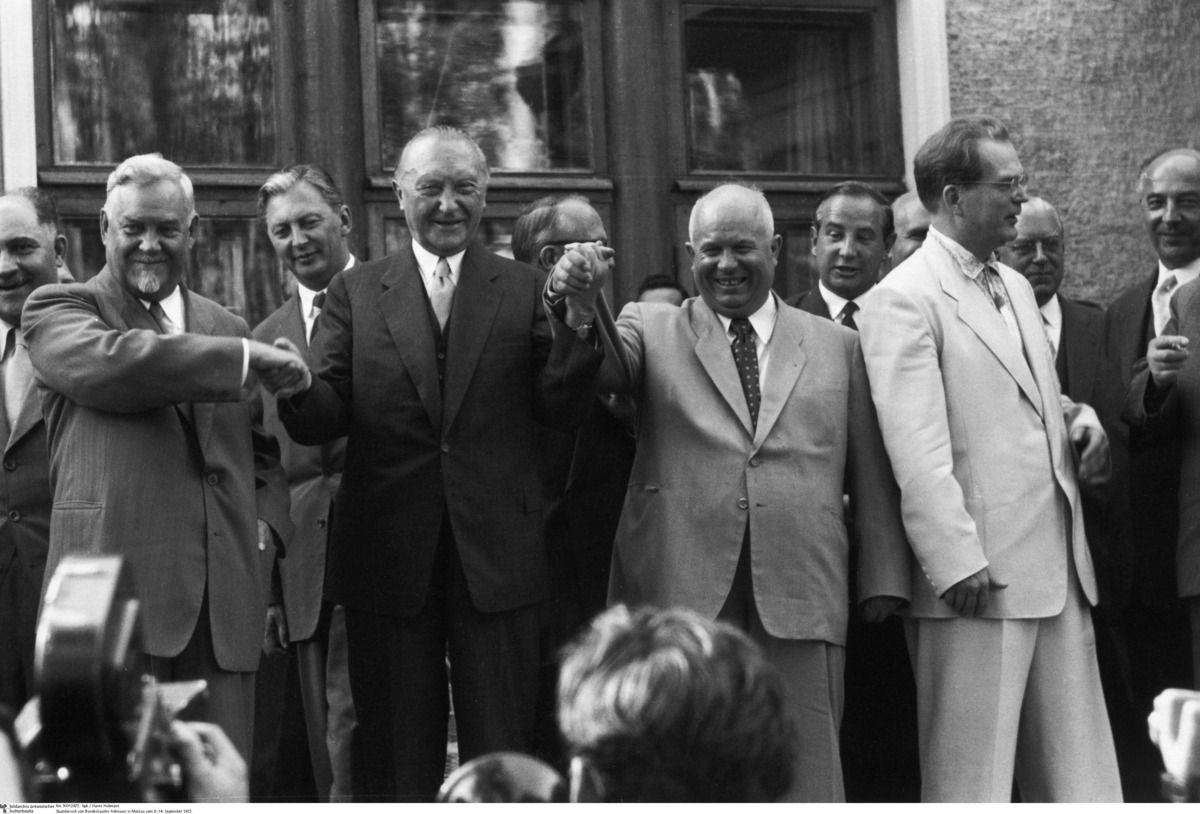Abstract
In view of the altered situation produced by the entry of the Federal
Republic into the Western alliance, the Soviet leadership sent
Chancellor Konrad Adenauer a diplomatic note on July 7, 1955, inviting
him to come to Moscow for talks about opening diplomatic relations.
After consultations with the Western allies, Adenauer accepted this
invitation to visit Moscow between September 8 and September 14. In
nerve-racking talks and negotiations, during which the Soviet
negotiators oscillated abruptly between jovial/friendly and
offensive/accusatory tones, an agreement was finally reached: diplomatic
relations would be established, and in return the Soviets gave a verbal
promise that all German prisoners of war and interned civilians still
held in the Soviet Union would be released. In a letter, Adenauer
expressly noted West German reservations regarding the recognition of
its eastern border and insisted that the Federal Republic alone was
entitled to speak for all Germans. Moreover, in order to prevent
international recognition of the GDR by further countries, the Hallstein
Doctrine, which was developed essentially by Wilhelm Grewe, Head of the
Political Department in Adenauer’s foreign ministry, and named after
Walter Hallstein, State Secretary in the foreign ministry, was
proclaimed. It warned other states that if they were to recognize the
GDR, the Federal Republic would break off diplomatic relations with
them. This picture, taken on September 11, 1955, in front of Maxim
Gorki’s former dacha, which the Soviet hosts made available for use by
the German delegation, shows from left to right: Nikolai Bulganin
(Chairman of the Council of Ministers), Konrad Adenauer, Nikita
Khrushchev (First Secretary of the Central Committee of the Soviet
Union), Mikhail Pervuchin (First Deputy Chairman of the Council of
Ministers); at left, behind Adenauer, stands Kurt-Georg Kiesinger (then
chairman of the Bundestag’s foreign affairs committee).
